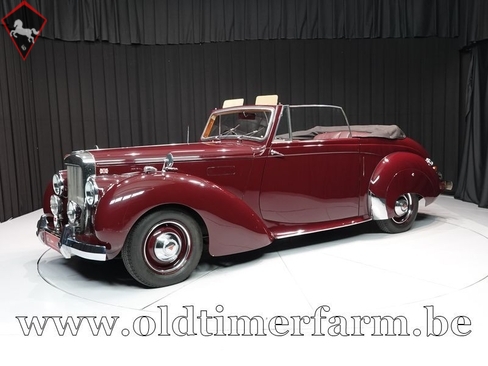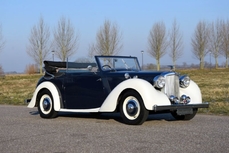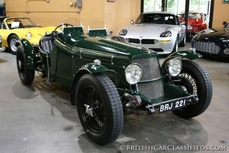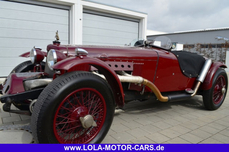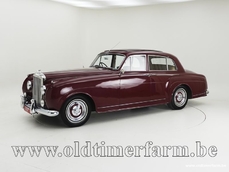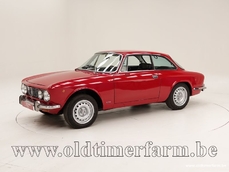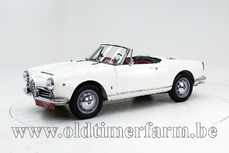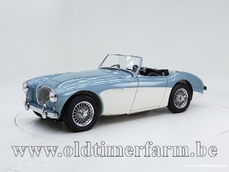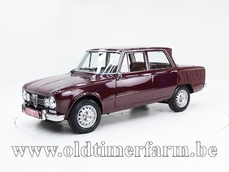Alvis TA14 21 '54 1954
Allmän beskrivning :
Lowered price from span class="pq6dq46d tbxw36s4 knj5qynh kvgmc6g5 ditlmg2l oygrvhab nvdbi5me sf5mxxl7 gl3lb2sf hhz5lgdu">img src="https://static.xx.fbcdn.net/images/emoji.php/v9/t33/1/16/2705.png" alt="?" width="16" height="16" /> €57.950- €49.950 img src="https://static.xx.fbcdn.net/images/emoji.php/v9/t33/1/16/2705.png" alt="?" width="16" height="16" /> The origin of the name Alvis has been the subject of a great deal of speculation over the years. Some have suggested "aluminium and vis ("strength" in Latin), or perhaps it may have been derived from the Norse mythological weaponsmith, Alviss. De Freville, founder of Alvis, rejected however vigorously all of these theories. In 1921, he specifically stated that the name had no meaning whatsoever, but was chosen simply because it could be easily pronounced in any language. He reaffirmed this position in the early 1960s, stating that any other explanations for the source of the name were purely coincidental. The first car model using a de Freville's engine was the Alvis 10/30. It was an instant success and established the reputation for quality workmanship and superior performance for which the company was to become famous. In 1936 the company name was shortened to Alvis Ltd, and aircraft engine and armoured vehicle divisions were added to the company by the beginning of World War II. Smith-Clarke designed several models during the 1930s and 1940s, including the six-cylinder speed 20, the Speed 25, and the Alvis 4.3 Litre model. Car production was initially suspended in September 1939 following the outbreak of war in Europe, but was later resumed and production of the 12/70, Crested Eagle, Speed 25, and 4.3 Litre continued well into 1940. The car factory was severely damaged on November 14, 1940 as a result of several bombing raids on Coventry by the Luftwaffe, although ironically the armaments factory suffered little damage. After WW II, a solid, reliable and attractive car, the TA 14 fitted well the mood of sober austerity in post war Britain, but much of the magic attaching to the powerful and sporting pre-war models had gone and life was not easy for a specialist car manufacturer. Not only had Alvis lost their car factory but many of the prewar coachbuilders had not survived either and those that had were quickly acquired by other manufacturers. In fact, the post war history of Alvis is dominated by the quest for reliable and reasonably priced coachwork. Chief engineer Smith-Clarke retired in 1950 and Dunn took over as chief engineer. In 1950 a new chassis and six-cylinder 3 Litre engine was announced and this highly successful engine became the basis of all Alvis models until production ceased in 1967. Saloon bodies for the TA21, as the new model was called, again came from Mulliners of Birmingham as they had for the TA 14, with Tickford producing the dropheads. But with the first of these becoming part of Standard Triumph and the second being acquired by Aston Martin Lagond, it was clear by 1954 that new arrangements would have to be made. By this time some of the most original and beautiful designs on the 3 Litre chassis were being produced by master Swiss Graber coachbuilder and indeed these one-off designed cars are highly sought after today. From 1952 to 1955 Alec Issigonis (father of the Mini) worked for Alvis and designed a new model with a V8 engine which proved too expensive to produce. Rover took a controlling interest in Alvis in 1965, the TF 21 was launched in 1966, (available, like its predecessors in both saloon and drophead form and with either manual or automatic gearbox), the model was beginning to show its age despite a top speed of 127 mph - the fastest Alvis ever produced. With only 109 sold and with political troubles aplenty in the UK car manufacturing business at that time, production finally ceased in 1967. Specifications Bodywork Length: cm (in): 467 (184) Width: cm (in): 168 (66) Height: cm (in): 159 (62.6) Wheelbase: cm (in): 282 (111) Weight: kg (lb): 1510 (3330) Mechanics. Displacement: straight-six 2993 cc (183 cu in) forward Valve gear: 12 Fuel system: 2 Solex carburettors Gearbox: 4-speed manual Driven wheels: rear-wheel drive Maximum power: 89 hp at 4000 rpm Maximum torque: 204 Nm at 2000 rpm Maximum speed: 145 km/h (90 mph)
1954 Alvis TA14 21 '54 is listed till salu on ClassicDigest in Aalter by Oldtimerfarm for €49950.
Fakta i bilen
Karosstyp : Personbil Märke : Alvis Modell : TA14 Modellversion : 21 '54 Motorvolym : 0.0 Årsmodell : 1954 Läge : Aalter Fordon Registrering : Odefinierad
49950 €
People who viewed this Alvis TA14 also viewed similar Alvis listed at ClassicDigest
Other cars listed for sale by this dealer
om Alvis TA14
Alvis TA 14, även känd som Alvis 2.5-Liter, är en anmärkningsvärd modell som tillverkats av den brittiska biltillverkaren Alvis Ltd. Här är några viktiga punkter som alla borde veta om Alvis TA 14:1. Introduktion efter kriget: Alvis TA 14 introducerades 1946, omedelbart efter andra världskriget. Det markerade Alvis återkomst till civil bilproduktion efter kriget, och tillgodoses den växande efterfrågan på pålitliga och bekväma bilar.
2. Sedanmodell: TA 14 var i första hand tillgänglig som en fyradörrars sedan, och erbjöd praktisk och komfort för både förare och passagerare. Den hade en rymlig interiör med gott om benutrymme och en välutrustad instrumentbräda.
3. Motor och prestanda: TA 14 drevs av en 1,9-liters inline-fyra-motor, som producerade cirka 65 hästkrafter. Även om det inte var ett högpresterande fordon, gav det smidiga och raffinerade köregenskaper som lämpar sig för turné och vardagsbruk.
4. Oberoende fjädring: TA 14 var utrustad med oberoende framfjädring, ett betydande framsteg på den tiden. Detta bidrog till förbättrad hantering och åkkomfort, vilket skilde den från många andra fordon på eran.
5. Ingenjörs- och byggkvalitet: TA 14 visade upp Alvis engagemang för kvalitetsteknik och hantverk. Den innehöll robust konstruktion, uppmärksamhet på detaljer och solid byggkvalitet, vilket återspeglade Alvis rykte om att producera välkonstruerade och pålitliga fordon.
6. Fortsatt utveckling: TA 14 utgjorde grunden för ytterligare Alvis-modeller, såsom TA 21 och den senare Three Liter-serien, som inkluderade designförfinningar och kraftfullare motorer.
7. Historisk betydelse: Alvis TA 14 spelade en viktig roll i Alvis efterkrigstidens återhämtning och återupprättande som en lyxbilstillverkare. Det representerade en förändring mot mer modern design och tekniska framsteg inom fordonsindustrin.
Även om Alvis TA 14 kanske inte har uppnått samma berömmelse som vissa av Alvis andra modeller, är den fortfarande en betydande del av varumärkets historia och exemplifierar Alvis engagemang för att producera raffinerade och välkonstruerade bilar.
Observera att informationen som tillhandahålls här är en allmän översikt och att det kan finnas mer specifika detaljer eller variationer förknippade med Alvis TA 14.
